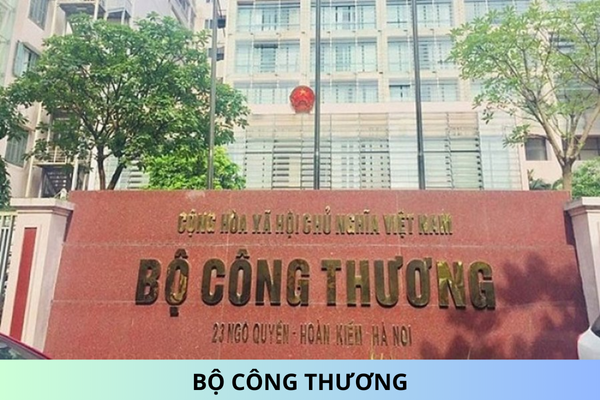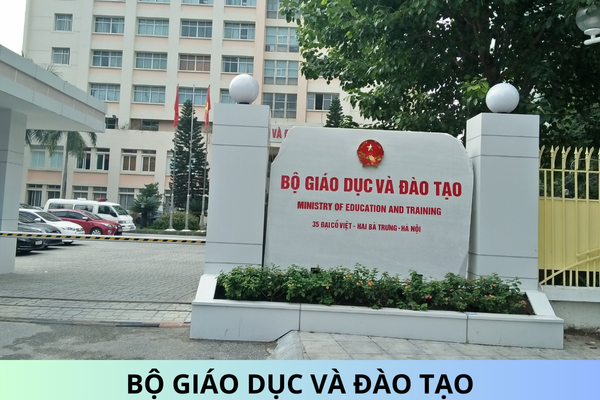List of Statistical Indicators for General Educational Levels in 2024
List of Statistical Indicators for the Education Sector at the General Education Level in 2024
What is the Statistical Indicator System for the Education Sector Used for?
The statistical indicator system for the education sector is used to:- Collect, compile, and analyze data related to the performance, resources, and outcomes of the education sector.- Provide a reliable basis for policymaking, planning, and management in the field of education.- Monitor and evaluate the effectiveness of educational programs and interventions.- Report and inform stakeholders, including government bodies, educational institutions, and the public, about the current state and progress of education.What are the Basic Principles of State Statistical Activities?
The basic principles of state statistical activities include:- Objectivity and Accuracy: Ensuring that statistical work is carried out impartially and that data collected is accurate and reliable.- Transparency: Making methodologies and results available to the public to enhance trust in statistical reports.- Confidentiality: Protecting individual and institutional data from unauthorized disclosure.- Relevance: Ensuring that statistical indicators are relevant and meet the needs of users.- Efficiency: Utilizing resources effectively to avoid duplication of efforts and to maximize the value of statistical outputs.List of Statistical Indicators for the Education Sector in General Education Level for 2024
Based on Annex 1 issued with Circular 03/2024/TT-BGDDT regarding the list of statistical indicators for the general education level in the education sector as follows:
| Code | Group, Indicator Name |
| 2.1 - Primary School | |
| 2101 | Number of primary schools |
| 2102 | Number of primary classes |
| 2103 | Number of primary classrooms |
| 2104 | Number of administrative staff, teachers, and other job positions in primary schools |
| 2105 | Number of primary students |
| 2106 | Average number of students per primary school teacher |
| 2107 | Average number of students per primary class |
| 2108 | Average number of teachers per primary class |
| 2109 | Primary school attendance rate |
| 2110 | Primary program completion rate |
| 2111 | Primary education completion rate |
| 2112 | Rate of permanent classrooms for primary schools |
| 2113 | Rate of national standard primary schools |
| 2114 | Rate of primary schools with online education |
| 2115 | Rate of on-time enrollment for grade one |
| 2116 | Rate of primary teachers meeting standardized training levels |
| 2117 | Rate of primary schools with basic education programs on gender, violence prevention, abuse prevention, and HIV knowledge |
| 2118 | Rate of primary schools with electricity |
| 2119 | Rate of primary schools with internet for study and teaching purposes |
| 2120 | Rate of primary schools with computers for study purposes |
| 2121 | Rate of primary schools with infrastructure and materials suitable for students with disabilities |
| 2122 | Rate of primary schools with drinking water |
| 2123 | Rate of primary schools with convenient and gender-separated restrooms |
| 2124 | Rate of primary schools with convenient hand-washing facilities |
| 2125 | Number of provinces/cities meeting primary education universalization standards |
| 2.2 - Lower Secondary School | |
| 2201 | Number of lower secondary schools |
| 2202 | Number of lower secondary classes |
| 2203 | Number of lower secondary classrooms |
| 2204 | Number of administrative staff, teachers, and other job positions in lower secondary schools |
| 2205 | Number of lower secondary students |
| 2206 | Average number of students per lower secondary school teacher |
| 2207 | Average number of students per lower secondary class |
| 2208 | Average number of teachers per lower secondary class |
| 2209 | Lower secondary school attendance rate |
| 2210 | Lower secondary graduation recognition rate |
| 2211 | Lower secondary education completion rate |
| 2212 | Transition rate from primary to lower secondary school |
| 2213 | Rate of permanent classrooms for lower secondary schools |
| 2214 | Rate of national standard lower secondary schools |
| 2215 | Rate of lower secondary schools with online education |
| 2216 | Rate of lower secondary teachers meeting standardized training levels |
| 2217 | Rate of lower secondary schools with basic education programs on gender, violence prevention, abuse prevention, and HIV knowledge |
| 2218 | Rate of lower secondary schools with electricity |
| 2219 | Rate of lower secondary schools with internet for study and teaching purposes |
| 2220 | Rate of lower secondary schools with computers for study purposes |
| 2221 | Rate of lower secondary schools with infrastructure and materials suitable for students with disabilities |
| 2222 | Rate of lower secondary schools with drinking water |
| 2223 | Rate of lower secondary schools with convenient and gender-separated restrooms |
| 2224 | Rate of lower secondary schools with convenient hand-washing facilities |
| 2225 | Number of provinces/cities meeting lower secondary education universalization standards |
| 2.3 - Upper Secondary School | |
| 2301 | Number of upper secondary schools |
| 2302 | Number of upper secondary classes |
| 2303 | Number of upper secondary classrooms |
| 2304 | Number of administrative staff, teachers, and other job positions in upper secondary schools |
| 2305 | Number of upper secondary students |
| 2306 | Average number of students per upper secondary school teacher |
| 2307 | Average number of students per upper secondary class |
| 2308 | Average number of teachers per upper secondary class |
| 2309 | Upper secondary school attendance rate |
| 2310 | Upper secondary graduation recognition rate |
| 2311 | Upper secondary education completion rate |
| 2312 | Transition rate from lower secondary to upper secondary school |
| 2313 | Rate of permanent classrooms for upper secondary schools |
| 2314 | Rate of national standard upper secondary schools |
| 2315 | Rate of upper secondary schools with online education |
| 2316 | Rate of repetition and dropout in upper secondary education |
| 2317 | Rate of upper secondary teachers meeting standardized training levels |
| 2318 | Rate of upper secondary schools with basic education programs on gender, violence prevention, abuse prevention, and HIV knowledge |
| 2319 | Rate of upper secondary schools with electricity |
| 2320 | Rate of upper secondary schools with internet for study and teaching purposes |
| 2321 | Rate of upper secondary schools with computers for study purposes |
| 2322 | Rate of upper secondary schools with infrastructure and materials suitable for students with disabilities |
| 2323 | Rate of upper secondary schools with drinking water |
| 2324 | Rate of upper secondary schools with convenient and gender-separated restrooms |
| 2325 | Rate of upper secondary schools with convenient hand-washing facilities |
What is the Purpose of the Statistical Indicators System in the Education Sector?
Based on Article 3 of Circular 03/2024/TT-BGDDT, the system of statistical indicators for the education sector is specified as follows:
System of Statistical Indicators for the Education Sector
- The system of statistical indicators for the education sector is a collection of statistical indicators to collect statistical information for evaluating, forecasting the situation, strategizing, policy-making, and developing plans for the education sector; it meets the needs of exchanging and sharing statistical information in education as stipulated by the Statistics Law and its guiding documents; it serves as a basis for developing statistical reporting policies in the education sector.
...
Thus, the system of statistical indicators for the education sector is used for the following purposes:
- Serving the work of evaluation, situation forecasting, strategy planning, policy-making, and developing plans in the education sector;
- Responding to the need for exchanging and sharing statistical information in education;
- Providing a basis for developing statistical reporting policies in the education sector.

List of statistical indicators for the education sector in general education level for 2024? (Image from the Internet)
What are the Basic Principles of State Statistical Activity?
Based on Clause 1, Article 5 of the Statistics Law 2015, the basic principles of state statistical activity are specified as follows:
Basic Principles of Statistical Activity and Use of Statistical Data and Information
- The basic principles of state statistical activity include:
a) Honesty, objectivity, accuracy, completeness, promptly;
b) Independence in statistical expertise and profession;
c) Consistency in profession, non-duplication, non-overlapping;
d) Openness, transparency;
e) Comparability.
...
Thus, there are 05 basic principles of state statistical activity including:
- Honesty, objectivity, accuracy, completeness, promptly;
- Independence in statistical expertise and profession;
- Consistency in profession, non-duplication, non-overlapping;
- Openness, transparency;
- Comparability.
Respectfully!










